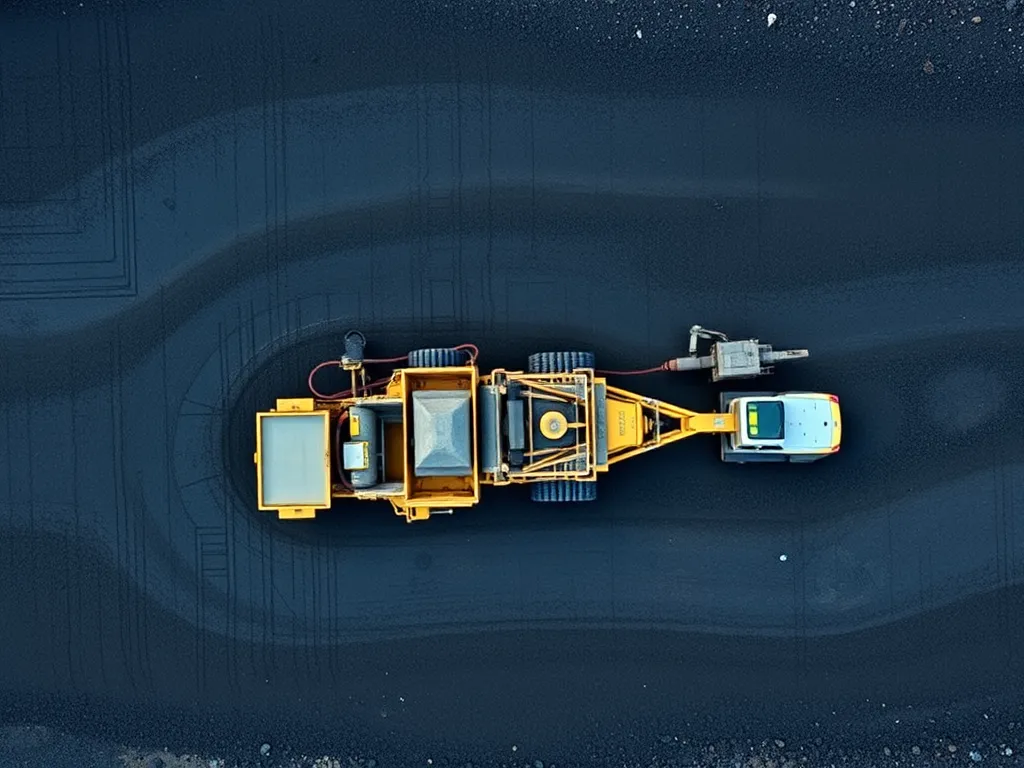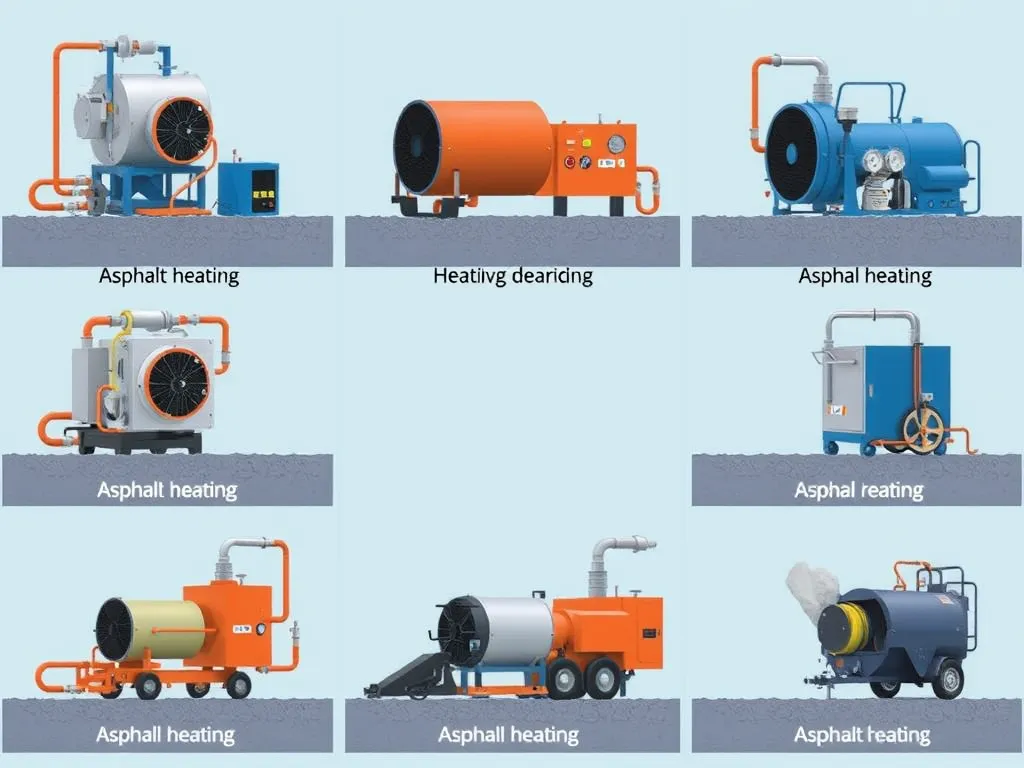Addressing Common Challenges in Asphalt Curing
Published on: May 6, 2025 | Last Updated: April 14, 2025
Written By: George Voss
Asphalt curing addresses common challenges like temperature shifts, moisture issues, and improper compaction during the pavement hardening process. Proper curing creates durable roads, smooth surfaces, and saves money over time. Ignoring these challenges leads to cracks, rutting, and repairs within 3-5 years instead of the typical 15-20 year lifespan.
This article breaks down how to tackle asphalt curing problems step by step. Learn temperature control methods for hot or cold climates. Explore moisture management tactics using sealants and timing strategies. Get tips on compaction techniques, material choices like PG binders or porous aggregates, and environmental impacts. Find best practices for monitoring curing time, checking equipment specs, and tracking weather patterns.
Contents
- Importance Of Proper Asphalt Curing
- Common Challenges in Asphalt Curing
- Effective Solutions for Asphalt Curing Issues
- Best Practices for Optimizing Asphalt Curing
- Common Mistakes to Avoid in Asphalt Curing
- Environmental Factors Affecting Asphalt Curing
- Frequently Asked Questions (FAQs)
- Closing Thoughts
- Useful References for You:
Importance Of Proper Asphalt Curing
Proper asphalt curing transforms liquid asphalt into a solid load-bearing surface. The process lets bitumen binders harden while maintaining flexibility. Without this phase, roads crack under traffic within months.
Role Of Curing in Asphalt Durability
Curing builds structural integrity by locking aggregates in place. PG (Performance Graded) binders need 24-72 hours at 50-85°F to reach 90% strength. This creates interlayer bonds that handle 18,000+ daily truck loads. Fast-track projects using infrared heaters or curing membranes still require 8-12 hours before opening to traffic.
| Curing Time | Compressive Strength | Lifespan |
|---|---|---|
| 24 hours | 75% | 12-15 years |
| 72 hours | 95% | 20+ years |
Impact Of Inadequate Curing on Pavement Quality
Rushed curing causes raveling, cracking, and moisture damage. Tests show 40% lower shear strength when asphalt cools below 45°F during curing. Pavements may last 50% less than designed – requiring repairs every 3-5 years. Florida DOT reports 22% more potholes in zones with frequent rain delays during curing phases.
Next, let’s examine specific asphalt curing challenges and proven ways to tackle them.
Common Challenges in Asphalt Curing
Managing the asphalt curing process requires precise handling of environmental and material factors. Let’s break down the key hurdles contractors face.
Temperature-related Issues
Temperature swings create immediate risks during curing. Even a 15°F deviation from ideal ranges can alter outcomes.
Effects of High and Low Asphalt Curing Temperatures
High heat above 325°F evaporates binders too fast, causing brittleness. Cold temps below 275°F slow curing, leaving surfaces vulnerable to deformation. PG 64-22 binders, common in northern states, crack below 50°F if improperly cured.
Managing Asphalt Curing Temperature Range
Infrared thermometers track mat temperature during placement. For cold climates, heated transfer vehicles maintain mixes at 300°F ±10°F. Thermal blankets extend working windows by 2-3 hours in sub-60°F conditions.
Moisture Management Challenges
Water infiltration accounts for 37% of premature pavement failures, per NAPA studies.
Excessive Humidity or Rainfall During Curing
Humidity above 80% slows evaporation, delaying curing by 40-50%. Rain within 6 hours of placement washes away binders, creating pockmarks. Tarps with 10 oz/sq yd fabric protect fresh asphalt from 0.5”/hr downpours.
Improper Moisture Control in Asphalt Layers
Trapped moisture between lifts forms steam pockets under traffic, causing delamination. Nuclear density gauges verify moisture content stays below 5% in base layers. Hydrophobic additives like Sasobit® reduce water retention by 18%.
Compaction and Air Void Problems
Air voids outside the 3-5% target range compromise structural integrity.
Low-Density Compaction Risks
Under-compacted asphalt (92% density) rutts at 50% the load capacity of properly compacted (96%) surfaces. Pneumatic rollers achieve 88-91% density before steel rollers finish to spec.
Tiny Air Voids and Aggregate Porosity Issues
Aggregates with less than 2% porosity trap moisture, while highly porous stones (over 6%) weaken mixes. #8 sieve gradation tests identify optimal stone sizes. Adding 1.5% cellulose fibers increases void interconnectivity by 22%.
Tackling these challenges head-on prepares crews for the next phase: deploying asphalt curing solutions that adapt to real-world conditions.
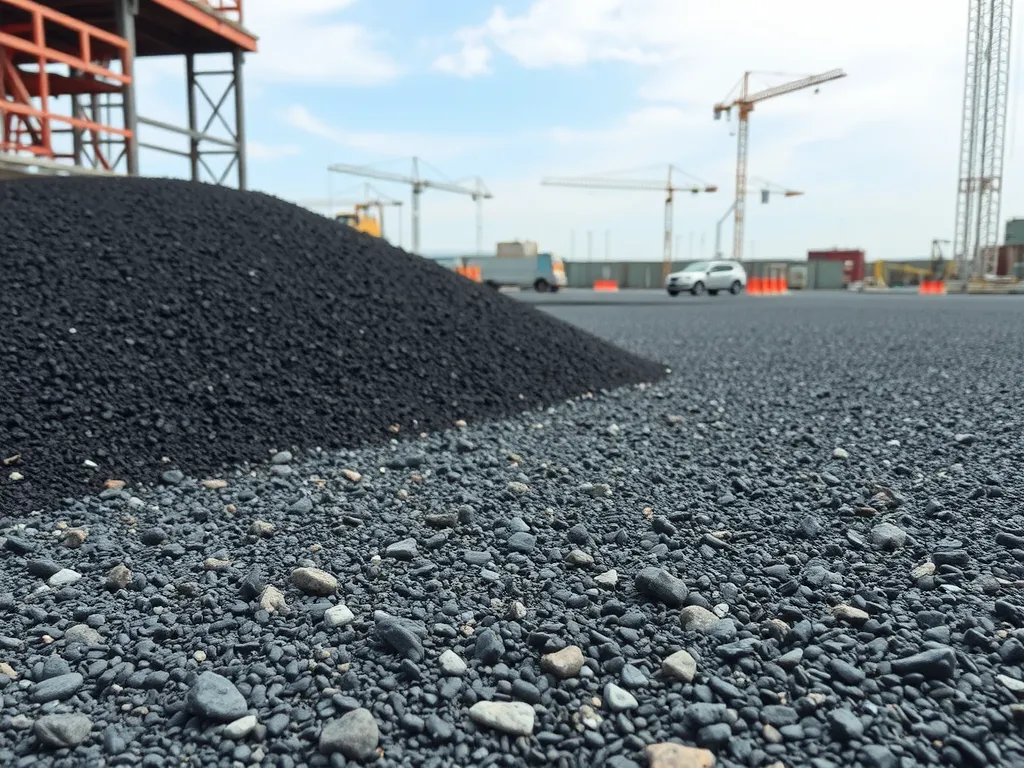
Effective Solutions for Asphalt Curing Issues
Solving asphalt curing problems requires tackling thermal shifts, humidity, and material composition. Proactive tactics boost curing quality across varying job conditions.
Temperature Control Methods
Managing asphalt curing temperature ranges (typically 50-85°F) is vital for optimal binder activation. Diverging from this span risks weak bonding or surface defects.
Heat Curing Techniques for Cold Conditions
In cold climates, thermal blankets hold heat in fresh asphalt, maintaining temps above 50°F. Infrared heaters or heated screeds work for small areas. For large projects, hot-mix asphalt with PG 58-34 binders resists cracking at 25°F.
Cooling Strategies for High-Temperature Environments
Above 90°F, misting systems lightly spray water to slow curing. Warm-mix asphalt (WMA) additives lower mix temps by 30-50°F, cutting oxidation risks. Night paving avoids midday solar radiation in arid zones.
Moisture Management Techniques
Rain or humidity above 80% disrupts curing by washing away binders. Two approaches shield against asphalt curing moisture issues.
Using Curing Compounds and Sealants
Coal-tar or asphalt-based curing seals form a hydrophobic layer. Apply at 0.15-0.25 gal/yd² within 2 hours of laydown. Tests show these cuts moisture damage by 60% in wet climates.
Timing Asphalt Layers to Avoid Weather Risks
Monitor humidity forecasts via tools like National Weather Service’s RH maps. If rain looms, delay paving or install temporary covers. Allow 24-48 hours between layers if humidity stays above 70%.
Optimizing Compaction and Materials
Air voids below 7% or above 3% harm durability. Balancing aggregates and binders ensures proper density.
Selecting Proper Aggregate Porosity
High-porosity aggregates (≥5% absorption) demand 0.5% extra asphalt content. Crushed granite or limestone with 2-4% porosity minimizes voids. Pair with 3/4″ nominal size for optimal interlock.
Balancing Asphalt Emulsion Levels
Slow-setting CSS-1h emulsions work for cold mixes, while rapid-setting CRS-2 suits patching. Maintain 5-7% residual asphalt in mixes—below 5% causes raveling; above 7% triggers bleeding.
Applying these asphalt curing solutions lays a solid foundation. Next, fine-tuning application protocols can push results from good to lasting.
Also See: Asphalt Roofing Solutions for a Durable Home
Best Practices for Optimizing Asphalt Curing
Proper curing directly affects pavement strength and lifespan. Follow these guidelines to tackle asphalt curing challenges effectively.
Laying and Compaction Guidelines
Quality starts with precise placement and density control. Errors here create long-term asphalt curing problems like cracking or raveling.
Proper Timing for Compaction Stages
Roll asphalt between 275°F and 200°F for optimal density. Below 175°F, compaction fails to reach 92-96% density targets. Use infrared thermometers to track mix temperature during rolling passes. Delay by 10 minutes per 15°F drop below 50°F ambient.
Avoiding Overworking the Surface
Excessive rolling fractures aggregates and traps 1-3% excess air voids. Limit steel-wheel roller passes to 4-6 times. Switch to pneumatic rollers once the surface stabilizes. Check for “wave” patterns indicating over-compaction.
Enhancing Curing Efficiency
Adapt processes to environmental shifts. A 2019 NAPA study found proactive adjustments reduce curing time by 32%.
Adjusting Curing Time Based on Environmental Factors
Extend curing by 20% for every 10°F below 70°F. In humidity above 80%, apply curing compounds like ASTM C309-accepted paraffin-based emulsions. For asphalt repair curing in rain, use quick-set polymer-modified emulsions with 45-minute setting times.
Scheduling Regular Inspections and Adjustments
Check surface hardness every 2 hours using a Schmidt hammer. Target rebound values above 40 for light traffic. For heavy loads, aim for 55+ rebound. Document temperature gradients between layers – differences exceeding 25°F require infrared reheating.
These asphalt curing solutions set the stage for avoiding critical errors. Next, we’ll explore frequent missteps that derail projects.
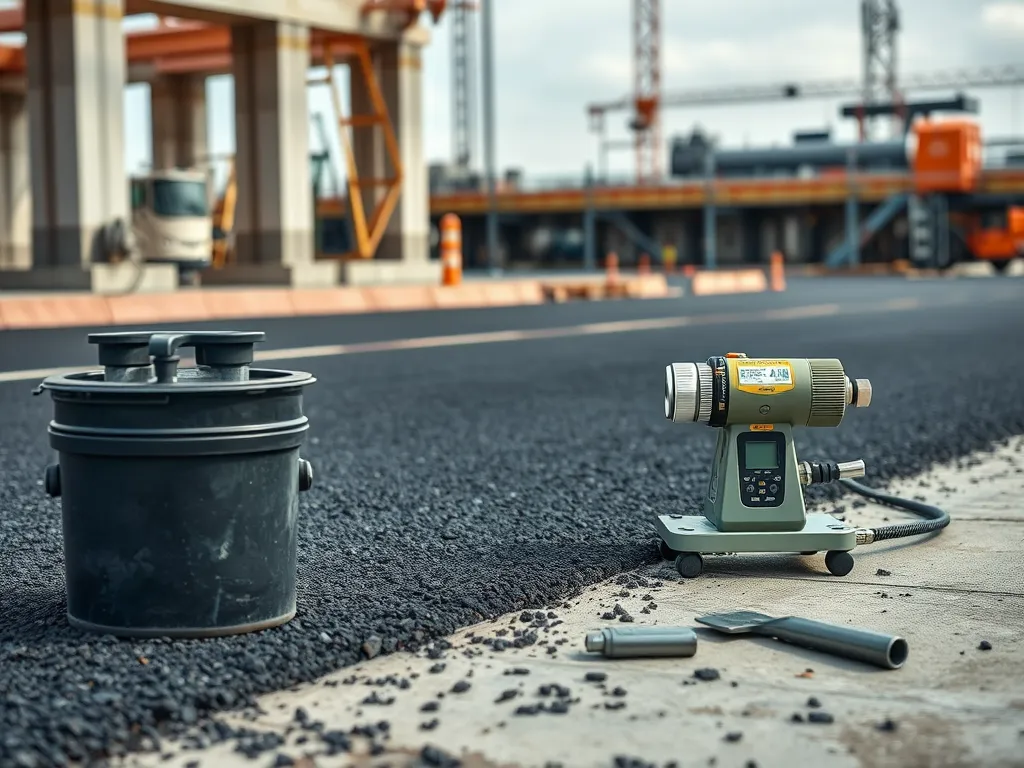
Common Mistakes to Avoid in Asphalt Curing
Avoiding these errors preserves pavement strength and prevents costly repairs. Let’s break down three critical missteps in asphalt curing.
Improper Compaction Timing
Compacting asphalt outside the 275°F to 200°F temperature window causes irreversible damage. Late compaction below 185°F creates low-density areas prone to rutting. Early compaction above 300°F displaces aggregates, creating uneven surfaces. Use infrared thermometers to track mix temperature during laydown.
Inconsistent Application Of Curing Materials
Uneven spray rates of curing compounds like SS-1P emulsions create weak zones. Gaps wider than 12 inches between sprayer passes leave asphalt vulnerable to moisture intrusion. Calibrate equipment to apply 0.10-0.15 gallons per square yard of curing sealant. Verify coverage with visual inspections.
Ignoring Environmental Conditions During Curing
Laying asphalt when ground temperatures drop below 50°F slows binder hardening. Humidity above 85% extends curing time by 30-50%, raising raveling risks. Monitor weather apps for sudden rain or temperature swings. Delay pours if forecasts show extreme shifts within the 24-hour curing window.
Mastering these basics sets the stage for deeper environmental strategies. Next, we’ll examine how climate patterns shape asphalt curing methods.
Environmental Factors Affecting Asphalt Curing
Weather and material choices directly impact how asphalt cures. From humidity shifts to thermal spikes, each factor demands specific tactics to maintain pavement quality.
Managing Curing in Humid or Rainy Climates
High moisture levels slow down curing by trapping water in asphalt layers. Contractors in rainy regions use quick-dry additives like calcium chloride or apply curing compounds that form a protective film. Scheduling work during dry spells and monitoring humidity with hygrometers (devices that track air moisture) prevents washouts. For urgent asphalt repair curing, infrared heaters dry surfaces fast—cutting curing time by 30-50% in damp conditions.
Mitigating Temperature Extremes
Asphalt curing temperature range matters: below 50°F slows hardening; above 85°F risks cracks. In cold zones, thermal blankets hold heat, while heated rollers maintain 275-300°F compaction temps. Hot climates require misting systems to cool pavements or shifting work to nighttime. Using PG 64-22 binders (performance-graded for high temps) adds flexibility to withstand thermal stress.
Sustainable Curing Material Options
New products cut environmental harm without sacrificing quality:
- Recycled asphalt pavement (RAP) mixes with fresh material, reducing bitumen use by 20%
- Bio-based curing agents from plant oils replace petroleum sealants
- Warm-mix asphalt (WMA) additives lower production temps by 50°F, shrinking carbon output
These choices trim costs while meeting ASTM D6372 specs for pavement longevity.
Mastering climate and material variables builds roads that last. Up next: tactics to fix curing flaws before they become costly repairs.
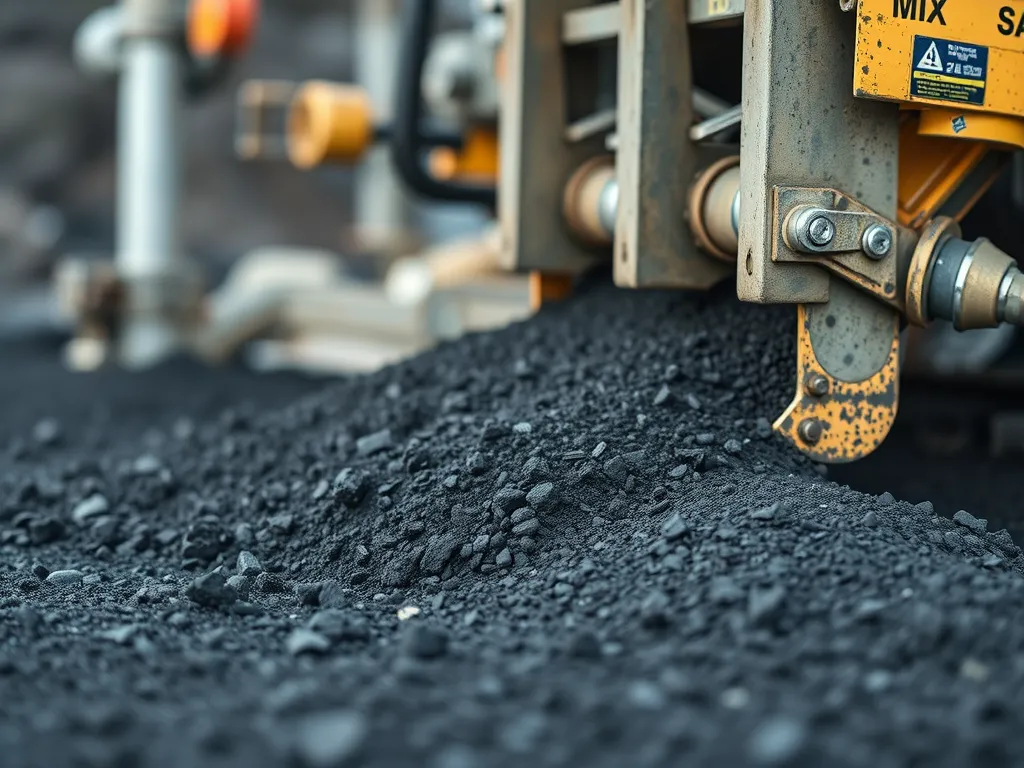
Frequently Asked Questions (FAQs)
How Can I Speed Up My Asphalt Curing?
To speed up asphalt curing, consider using warm-mix asphalt technology or curing compounds that accelerate the hardening process. Additionally, optimizing the ambient temperature during application, and utilizing infrared heaters can help reduce curing time significantly.
What Helps Asphalt to Cure Properly?
Proper curing of asphalt depends on maintaining optimal temperatures, controlling moisture levels, and ensuring adequate compaction. Using quality asphalt mixes, applying curing compounds appropriately, and monitoring environmental conditions are key factors in ensuring effective curing.
What Happens if Asphalt is Not Compacted Enough?
If asphalt is not compacted adequately, it can lead to severe structural issues such as deformation, rutting, and premature cracking. Inadequate compaction can result in reduced load-bearing capacity, affecting the overall durability and lifespan of the pavement.
Can Weather Conditions Affect Asphalt Curing?
Yes, weather conditions significantly affect asphalt curing. High humidity can slow down the curing process, while cold temperatures can lead to inadequate hardening. Monitoring weather forecasts and adjusting paving schedules accordingly can mitigate these risks.
How Do I Know When to Stop Compaction?
The correct time to stop compacting asphalt is when you reach the desired density, typically between 92-96%. This can be monitored using density gauges or by performing core samples to ensure that the asphalt has achieved sufficient compaction without introducing flaws.
Is There a Best Time Of Year for Asphalt Curing?
The best time for asphalt curing typically falls during mild weather conditions, usually in spring or fall. Avoiding extreme temperatures—both hot and cold—can help ensure proper curing. It’s crucial to monitor daily temperature variations and humidity levels to optimize your paving schedule.
Closing Thoughts
Addressing common challenges in asphalt curing is crucial for achieving durable and high-quality pavement. Proper temperature control, moisture management, and effective compaction are vital elements. By implementing best practices and avoiding common mistakes, you can significantly improve the curing process.
Remember to consider environmental factors. This awareness allows you to tailor your approach, whether dealing with humidity or temperature extremes. Using suitable materials further enhances the durability and functionality of asphalt surfaces.
For more insights and tools, check out Asphalt Calculator USA. Ensuring that you address these challenges can lead to long-lasting results in your asphalt projects.
Useful References for You:
- National Asphalt Pavement Association (NAPA, Industry Reports & Best Practices)
- Top 5 Common Asphalt Paving Problems and How to Prevent Them
- Common Asphalt Curing Mistakes to Avoid – EastCoat Pavement Services
- Common Challenges in Commercial Asphalt Resurfacing | Buck Bros
- Four Common Challenges of Asphalt Paving – Cassidy Paving

